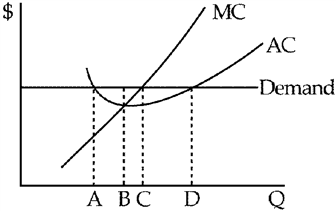Which of the following mistakes do consumers commonly commit when making decisions?
a. They take into account monetary costs but ignore nonmonetary opportunity costs.
b. They fail to ignore sunk costs.
c. They are unrealistic about their future behavior.
d. All of the above are mistakes consumers commonly commit when making decisions.
d. All of the above are mistakes consumers commonly commit when making decisions.
You might also like to view...
Starting from long-run equilibrium, an increase in autonomous investment results in ________ output in the short run and ________ output in the long run.
A. lower; potential B. higher; higher C. lower; higher D. higher; potential
The production possibilities curve represents the set of all
A) nonlinear forms of production in the economy. B) combinations of goods and services that can be used in the production of other goods and services. C) factors of production that can be used to manufacture goods and services. D) feasible combinations of goods that the economy can produce given that a nation's resources are fully employed.
When interest rates in the U.S. decrease, we can expect NCO to:
A. decrease, because capital inflow is increasing. B. increase, because capital inflow is decreasing. C. decrease, because capital inflow is decreasing. D. increase, because capital inflow is increasing.
Figure 10-1

If the profit-maximizing firm depicted in Figure 10-1 is perfectly competitive, how much output should it produce?
a.
A
b.
B
c.
C
d.
D